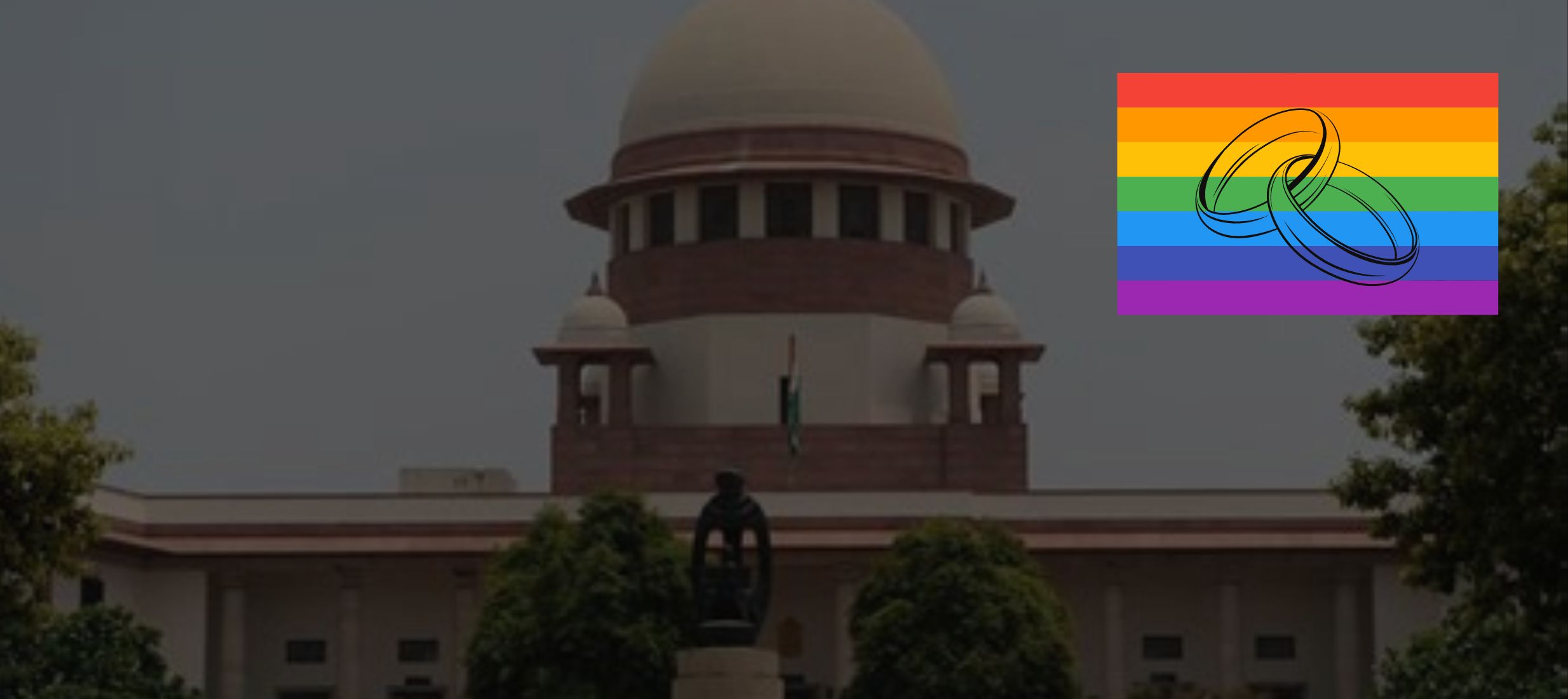Analysis
SCO Shorts: Plea for Marriage Equality
A 5-Judge Constitution Bench will decide the validity of same-sex marriages in India. SCO breaks down the case here.

On March 13th, 2023, the Supreme Court referred the case concerning the recognition of same-sex marriages to a 5-Judge Constitution Bench. The case will be heard on April 18th, 2023.
What is the case about?
In November 2022, two same-sex couples—Supriyo Chakraborty and Abhay Dang, and Parth Phiroze Merhotra and Uday Raj Anand—filed writ petitions at the SC seeking legal recognition of same-sex marriages in India. They argued that though the SC’s Judgement in Navtej Singh Johar vs. Union of India (2018) decriminalised homosexuality, they could not freely marry their partners because India’s marriage laws did not recognize same-sex marriages.
As of now, there are almost 20 petitions before the SC challenging the constitutional validity of provisions in the Special Marriage Act, 1954, the Hindu Marriage Act,1955, the Foreign Marriage Act, 1969 and other personal laws in India. These petitions were filed by same-sex couples, trans-couples and activists from across the country.
Why does this matter?
In Navtej Singh Johar (2018), 5 SC judges unanimously decided to partially strike down Section 377 of the Indian Penal Code, 1860 and decriminalised same-sex relations between consenting adults. The Court held that this provision violates an LGBTQIA+ person’s rights to life, dignity and freedom of personal choice under Article 21 of the Constitution of India, 1950.
While this decision recognised an LGBTQIA+ person’s ‘right to love’, it did not recognise their ‘right to marry’. Persons from the LGBTQIA+ community still cannot legally enjoy the benefits available to married people. For instance, they cannot adopt children, or be natural successors in matters of inheritance. They also cannot have the same maintenance and tax benefits as heterosexual married couples. Moreover, after the death of a partner, they cannot take advantage of pension benefits.
What is the case’s journey at the SC so far?
On November 25th, 2022, a Bench comprising Chief Justice D.Y. Chandrachud and Justice Hima Kohli passed an Order directing the Union to respond to the petitions.
On January 6th, 2023, a 3-Judge Bench led by CJI D.Y. Chandrachud transferred 9 pending petitions dealing with similar issues from the Delhi and Kerala High Courts to the SC.
On March 12th, 2023, the Union filed their Counter Affidavit. On March 13th, 2023 the petitioners as well as the Union appeared before a Bench comprising CJI Chandrachud, Justice P.S. Narashima and Justice J.B. Pardiwala and presented their stances on the matter.
What did the petitioners argue?
Senior Advocates Abhishek Manu Singhvi, Neeraj Kishan Kaul, Mukul Rohatgi, and Menaka Guruswamy appeared for different petitioners in the case. They argued that Section 4(c) of the Special Marriage Act, 1954, discriminates against same-sex couples. The provision only recognises marriage between a ‘male’ and a ‘female’. The petitioners also argued that Navtej Singh Johar (2018) recognised same-sex unions.
Sr. Advs. K.V. Viswanathan and Jayna Kothari also appeared, representing petitioners seeking the recognition of the right to marry for trans-persons.
What is the Union’s stance?
The Union’s Counter Affidavit opposed same-sex marriage, stating that all personal laws clearly recognise marriage as a union between a man and a woman. Solicitor General Tushar Mehta, who represented the Union before the CJI-led Bench, also argued that the Legislature should decide this issue, not the SC. Further, he stated that homosexual couples’ right to ‘union’ recognised in the Navtej Singh Judgement (2018) did not mean the ‘union of marriage’
What next?
A 5-Judge Bench will begin hearing the case on April 18th, 2023. The decision of the SC following the proceedings will determine the extent of personal and matrimonial rights of the LGBTQIA+ community in India. The legal recognition of same-sex marriages would grant same-sex couples benefits at par with heterosexual couples.
